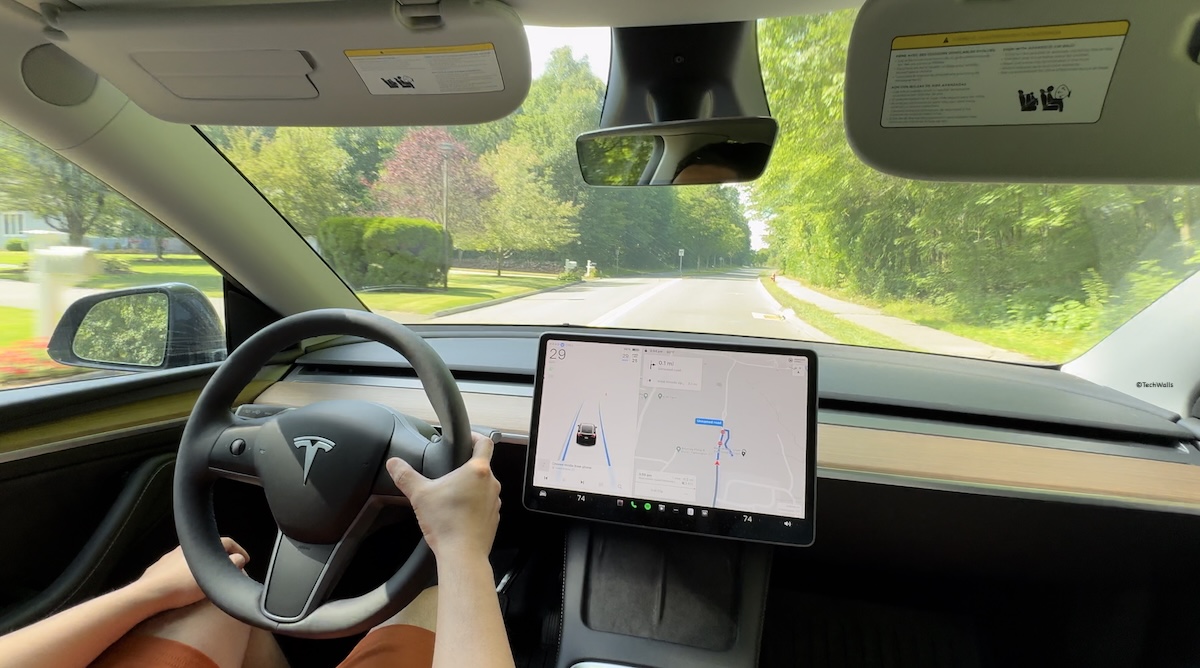Tesla is leading the automotive industry with its cutting-edge technology, particularly in autonomous driving. The Full Self-Driving (FSD) is, of course, their best driving assistance system, however, users will have to pay a premium price to use the software while the Autopilot is free and comes with all Tesla vehicles. While both offer driving assistance, they serve different purposes. Here’s a comprehensive comparison between Tesla’s FSD and Autopilot, along with 5 compelling reasons why many Tesla owners might opt out of purchasing the FSD package, at least for now.
Autopilot: The Basics
Tesla’s Autopilot is an advanced driver assistance system (ADAS) designed to enhance driving on highways. It includes features such as Traffic-Aware Cruise Control, which matches the speed of your car to that of the surrounding traffic, and Autosteer, which assists in steering within a clearly marked lane. These features make highway driving more convenient and less stressful, allowing drivers to maintain a set speed and distance from the vehicle ahead while keeping the car centered in its lane.

When enabling Autopilot on city streets, it just helps the car stay within the lane. When approaching a red light or a stop sign, it slows down just a little bit and makes a loud warning asking me to press the brake pedal immediately; If I don’t do anything, the car will just keep going and potentially lead to accidents. So, I only turn on Autopilot after entering highways, then the car will just drive in one lane at a steady speed or follow the car ahead. You will need to change lane or take exit by yourself. The driving experience is not as smooth and confident as FSD but it is acceptable for many people.
Full Self-Driving (FSD): Beyond Autopilot

FSD is Tesla’s ambitious leap towards fully autonomous driving. It includes all the features of Autopilot and adds more advanced capabilities. Navigate on Autopilot allows the car to handle highway driving from on-ramp to off-ramp, including taking exits and interchanges based on the destination set in the navigation system. Auto Lane Change enables the vehicle to change lanes automatically, ensuring smoother and more efficient travel on multi-lane roads. Autopark assists in parking by autonomously maneuvering the car into parallel or perpendicular spaces, making parking in tight spots effortless. Traffic Light and Stop Sign Control further enhances urban driving by enabling the car to recognize and respond appropriately to traffic lights and stop signs, stopping and proceeding as necessary. These features aim to reduce driver workload and increase safety, although they still require active supervision. There are several reasons why I don’t subscribe to the FSD:
- Autopilot is Competent on Highways: For many Tesla owners, the Autopilot system suffices, especially for highway driving. Its ability to handle speed adjustments and lane-keeping effectively reduces the stress of long drives. Given that highway driving constitutes a significant portion of many drivers’ time on the road, the additional features of FSD may not seem as critical.
- Inconsistent Performance: One of the primary concerns with FSD is its inconsistent performance. While it works impressively well in many scenarios, there are instances where it struggles, especially in complex urban environments. Drivers can’t rely entirely on FSD for their driving needs as it requires supervising; I have to disengage FSD in almost all trips, even short ones, and feel much more confident driving the Tesla by myself.
- Causes Carsickness: The driving style of FSD, which includes frequent stops, starts, and lane changes, can cause discomfort for passengers, leading to carsickness. This is a significant drawback for those who are prone to motion sickness, as it can make the driving experience unpleasant.
- Higher Battery Consumption: FSD consumes more battery compared to standard Autopilot due to its extensive use of advanced sensors, cameras, and processing power required for its autonomous driving functions. FSD continuously analyzes and interprets vast amounts of data from its surroundings to navigate complex driving environments. Additionally, FSD’s frequent acceleration, braking, and steering adjustments to maintain optimal driving conditions contribute to higher energy usage.
- Cost: The cost of the FSD package is another major obstacle. Priced at $8,000 as of July 2024, this is a significant investment. For many, the benefits do not justify the high price tag, especially when the standard Autopilot already provides basic features for highway driving.
Should You Use Autopilot or FSD?
Tesla’s FSD and Autopilot represent two levels of autonomous driving technology. Autopilot offers a basic solution for highway driving and it comes with all Tesla cars. On the other hand, FSD aims to push the boundaries of autonomous driving but comes with a hefty price tag of $8,000 or $99 per month. FSD is also not transferable most of the time, so if you have an accident and your Tesla get totaled, you might lose FSD and will have to buy it again for your new car. I don’t drive enough to justify the price, so I decided not to subscribe after the 4-month trial expired.
An alternative approach could be putting this amount in a savings account with a 5% annual interest rate. Over the course of a year, the $8,000 would generate approximately $400 in interest. Then you can use the amount towards a monthly FSD subscription; That means you can subscribe for the 4 months you drive the most and don’t have to pay $8,000 outright.
As Tesla continues to develop and refine FSD, it will be interesting to see how these features evolve and whether the concerns associated with FSD can be addressed. For now, the choice between Autopilot and FSD remains a personal one, depending on individual driving habits, needs, and budget.



